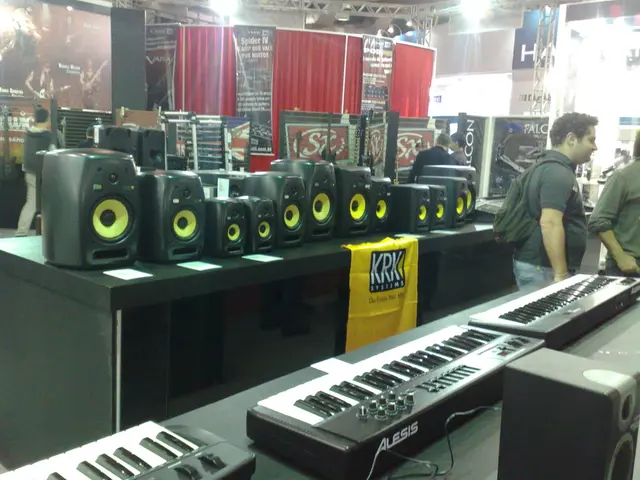Experience with Polestar 3 Reveals Accurate Range Estimation, Averaging 3 Miles per 1% Battery During a Long Journey, as Compared to Tesla Model Y
The Polestar 3, a 5-seat E-segment SUV built on Volvo's SPA2 platform, is making waves in the electric vehicle market. This vehicle, with its single- and dual-motor powertrains, has been praised by Tesla expats for its focus on comfort, details, and tactile refinement.
In real-world tests, the Polestar 3 has achieved impressive efficiency, with test drivers from Sweden observing an average range of 3 miles per percent of the battery. One such tester reported a consistent 3 miles per 1% of battery, excluding speeds over 90 mph or steep grades. John W. Irwin's real-world testing showed the Polestar 3's efficiency to be "just a tad better than 3 miles per kWh in mixed driving at maximum 70 mph" and "about 3.3 miles per kWh" on slower roads. These figures put the Polestar 3's efficiency on par with, if not better than, its competitors.
Bryan Edwards, a former Tesla owner, finds the drive of the Polestar 3 superior to that of Tesla, while acknowledging Tesla's software superiority. Camille Maddox, another Tesla expat, points out that Tesla's real-world creature comforts may be sacrificed for Silicon Valley polish.
The Polestar 3's design is a major draw for Tesla owners looking for a change. The vehicle boasts a low roofline, wide stance, adaptive dual-chamber air suspension, and active dampers for a sporty feel, with up to 250 mm ground clearance. Its interior uses recycled plastics, aluminum, and bio-attributed MicroTech to promote sustainable luxury.
However, the Polestar 3 is not without its drawbacks. Reviewers praise the vehicle's comfortable seats and road-trip readiness, but note high ambient heat can reduce charging rates and occasional omission of Tesla chargers in the navigation system. Matt Harris questions the Polestar 3's cargo space compared to his Model Y.
Despite these minor issues, the Polestar 3's range consistency has been confirmed by several Tesla expats. The dual-motor version of the Polestar 3 produces up to 380 kW (517 hp) and 671 lb-ft, using torque vectoring via a BorgWarner dual-clutch rear axle.
Polestar is making a concerted effort to attract Tesla owners, offering steep discounts and emphasizing its sleek design, premium interiors, and customer-service focus. The company is also planning to expand its U.S. "Spaces" for home test drives, free pick-up/delivery service, and mobile servicing.
In Q1 2025, Polestar achieved 76% sales growth year-over-year, resonating with eco-conscious buyers due to its minimalist Scandinavian design and use of sustainable materials. With its focus on comfort, efficiency, and sustainability, the Polestar 3 is a strong contender in the electric vehicle market.
Read also:
- Peptide YY (PYY): Exploring its Role in Appetite Suppression, Intestinal Health, and Cognitive Links
- Toddler Health: Rotavirus Signs, Origins, and Potential Complications
- Digestive issues and heart discomfort: Root causes and associated health conditions
- House Infernos: Deadly Hazards Surpassing the Flames








